Bursting forth from the Webway, the forces of the Asuryani have finally arrived in 9th edition proper – and they’ve brought friends. The brand new Aeldari codex covers not only the Craftworld Eldar, but also the cryptic Harlequins and grim Ynnari, making it one of the largest and deepest codexes we’ve seen this edition.
So large, in fact, that we’re shaking our formula up a bit for this review. Today, you’re going to get a mighty four articles covering this book, as follows:
- Codex: Aeldari Overview (this article): This is going to give you the scoop on the most important details of what this book does for Craftworlds. This is ideal if you’re elf-curious or expecting to play against them a lot and you want the lowdown on their key tools.
- Asuryani Deep Dive: More detail on the Craftworlds for elf aficionados, following our standard template.
- Harlequins Review: More detail on the Harlequins, for elf aficionados who are also clowns, and also following our standard template.
- Ynnari Review: A look at what you can do with the reborn.
We’ll also be following that up with the following over the next few days:
- A Competitive Round Table: The Art of War crew will be joining us as we offer competitive thoughts on the new book and how it’ll fit into a very difficult meta.
- Crusade Reviews: As always (and especially with so much to cover in the main review), we’ll be taking a look at the Crusade rules for all of the Aeldari next week. Whether you want to send your units walking down one of the paths of the Asuryani, harvest souls for Ynnead or prepare a spectacular performance with your Harlequin Troupes, the extra-large Crusade section in this book has you covered.
Hopefully there’s something for everyone there, and it helps break things down – this book is dense.
Just before we start, we’d like to thank Games Workshop for providing us with a review copy of this book, and with some of the models you’ll see pictured within the article.
Why Play the Aeldari?
Ever since they caused the birth of the Chaos deity Slaanesh, the Aeldari have been doomed, their species sentenced to a long, slow death stretching over millennia. The survivors of the great cataclysm that destroyed their empire have found different ways to adapt to their fall; the vicious Drukhari fled into the Webway, and now prey on the souls of others to try and safeguard their own. Though prepared to fight with their kin against what they see as the lesser (read: non-Aeldari) races in the galaxy, the Drukhari mostly spurn their weakling kin, and are consequently consigned to their own codex.
Meanwhile, the enigmatic Harlequins placed themselves in the hands of Cegorach, the Laughing God; they too roam the Webway, but for mysterious reasons of their own. Where they appear, they attack in acrobatic displays, as much performance as battle, protected by the fortune of their trickster god – whose luck now extends to being a faction ability.
Others chose a different path. In their flight from the newly formed Eye of Terror, many of the Aeldari struck out on giant flotilla ships called Craftworlds – these are the Asuryani. The Asuryani are few in number, but they’re capable of running rings around their opposition while launching attacks of terrifying speed and violence, and that’s well reflected in the new Codex.
Finally, long after the fall, in the 41st Millennium, the Ynnari came into being. Ynnead is the Whispering God and Yvraine is his prophet; she seeks to arrest the decline of the Aeldari race by bringing about her god’s resurrection, breaking their cursed link to Slaanesh and restoring the Aeldari to their ancient power. Whether this can really be done is hotly disputed by the Aeldari, but Yvraine is willing to try, and the promises of the God of the Dead have brought Aeldari of all paths flocking to her banner – not just Craftworlders, but Drukhari and Harlequins too.
This book incorporates all of this into a single authoritative tome – you can play with the proud, martial Craftworlders, the gracious and deadly Harlequins, or represent a combination of both of them and the vile Drukhari coming together beneath the bloody banners of the God of the Dead. There’s a whole range of different playstyles available in this book; if you’ve ever wanted to play some kind of space elf, then you should find something here to satisfy your interest.
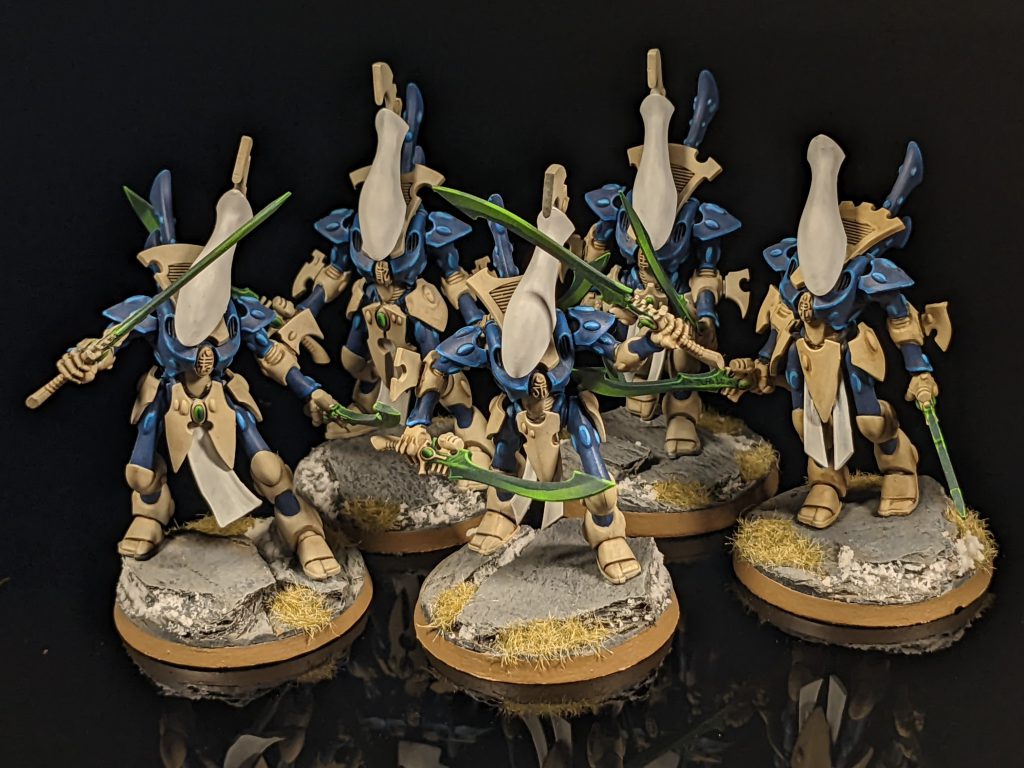
What’s in this Book?
- Lore for the Aeldari, covering the fall of the Eldar, the Craftworlds and their notable champions, plus what the Harlequins and Ynnari are up to.
- Rules for constructing an Asuryani army, including one that draws on the strengths of the Ynnari (which we’ll look at later today).
- A revamped set of Aspect Powers and Pivotal Roles, allowing you to turn some of your champions into elite killing machines or powerful finesse tools.
- Crusade Rules, including proper rules support for the Paths of the Eldar for the first time.
- Three disciplines of Psychic Powers available to Craftworld Psykers, plus one each for the Ynnari and Harlequins
- All the stratagems, traits and relics you’d expect from a 9th Edition codex.
- Datasheets for all Asuryani, Harlequin and Ynnari units, and even the new Aeldari Corsairs too.
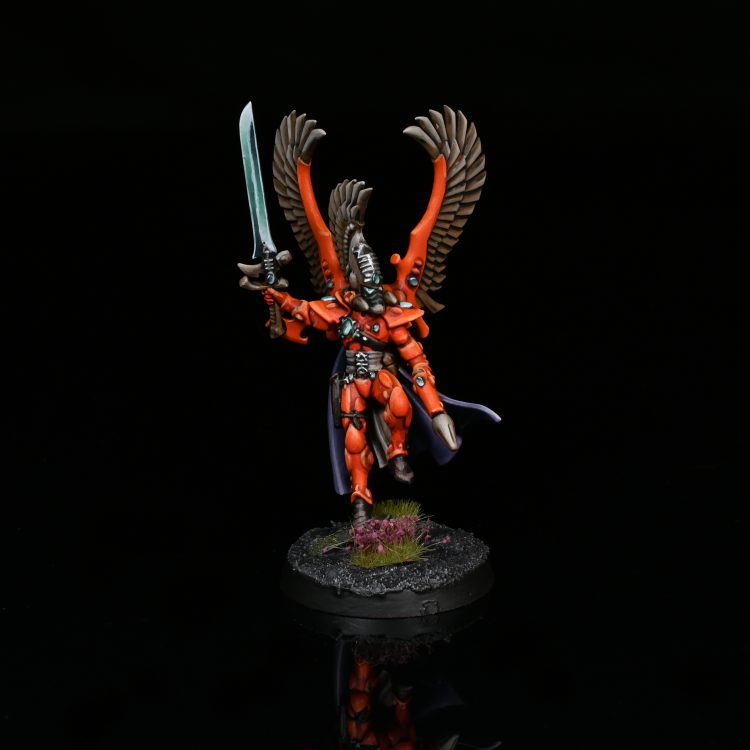
Seven Things to Know About Asuryani
If you’re a Craftworlds Eldar player, you’ve likely been waiting a long time for this update, and wondering just how crazy the elf bullshit is going to get this time around. Likewise, if you’re not a Craftworlds player, you’re likely wondering the same thing, only dreading the answer. Here are seven things you need to know about Eldar in the new codex.
Strands of Fate
Everyone loves rolling sixes, and Craftworlds just get to do that a bit more. Classic Eldar. This new mechanic has you roll six dice at the start of each battle round, and you get to keep a number of them based on the game size (4 in Strike Force games). Each die result corresponds to a type of roll you can spend that die on later in the round to automatically generate a 6 result for a single die – no roll required. These six rolls are:
- Advance
- Charge
- Psychic Test
- Hit Roll
- Wound Roll
- Saving Throw
This gives you a great way to reduce the variance in your games and ensure that you make key charges, pull off key powers, and pass key saves – and that last one is incredibly important in order to ensure your fragile warriors survive.
Battle Focus Lets Models Move-Shoot-Move
The other big Eldar faction rule, models with this rule can shoot Assault or Pistol weapons after advancing and can do so without penalty. In addition, if they don’t Fall Back or Advance, then after they shoot they can move up to D6” (this counts as a Normal Move, though importantly you can’t embark into a transport with it). There’s one major catch here – if the model tries to make a Battle Focus move through area terrain, they have to subtract 3” from the move, making it more difficult to jump back into cover.
Depending on the terrain, savvy players can use this to their advantage, whipping around corners to pop off a shot before backing up out of line of sight, maximising their firepower while still forcing an opponent to come and dig them out. It’s particularly good in Biel Tan, where you treat any rolls of one or two as a three instead.
Falcons are Drop Pods Now
The humble Eldar Falcon can now arrive on turn 1, and all of its occupants can immediately disembark (more than 9” away from enemy units), turning the vehicle into a drop pod for the Aeldari. It’s a bit bigger and harder to place, but the ability to make a 9” charge more likely with Strands of Fate or light someone up with shuriken catapults or fusion guns makes this a powerful option – and the Falcon itself comes with guns just a little better than a storm bolter.
Farseers are Better Than Ever
The psychic leaders of the Aeldari are better than they’ve ever been: They now fully ignore Perils of the Warp, and they give you re-rolls on Strands of Fate dice. On top of that, they have access to some amazing powers, including Will of Asuryan, a key cog that makes the army work by giving any unit the Objective Secured ability, having it ignore morale, and giving it the ability to shoot while performing an action – that last one is particularly powerful in the new Nachmund missions, since a third of them have their bonus primary points tied to an Action of some kind.
Aspect Warriors are Great
Aspect Warriors are all fantastic at their jobs now, and while some may be a little on the pricey side, they’re something you’re going to want to work into lists. The Phoenix Lords have also been retooled; their output is a lot more meaningful, they’re pretty tough to kill (you can’t do more than 3 wounds to them per phase), and they give nearby Aspect Warriors of their shrine +2 Leadership and Objective Secured, which considerably broadens your options for objective play.
The Webway Gate is Going to See Competitive Play
Games Workshop have been trying to make a Fortification that really matters for years, and it looks to us like they’ve finally nailed it – the Webway Gate is tremendously powerful, and hugely important to the army’s dynamic. Having one lets you put units into Strategic Reserves for half cost, rounding down (which lets you pack a whole lot of stuff into reserve), and when your units come in they can potentially do so straight out of the gate and into melee. On top of that, the gate can’t be destroyed; like the Feculent Gnarlmaw from the Chaos Daemons codex, it’s treated as a terrain feature. It’s going to see play.
The Craftworlds Secondary Objectives are Just OK
There are four Craftworlds secondary objectives and none of them jump out as massively powerful. The one to watch for is potentially The Hidden Path, which allows you to score VP at the end of your Command phase for having a model within 3” of your webway gate (and having no enemy models within 3”). If you don’t have a gate, then you do this with an objective that’s more than 6” away from your Deployment zone. If Webway Gates take off, this could potentially have a lot of play; your opponent is forced to come to the Gate to try and prevent you scoring it, and that’s exactly where you want them. Lists that are all in on Aspect Warriors might also be able to risk Wrath of Khaine, rewarding them for cutting a brutal swathe through the enemy.
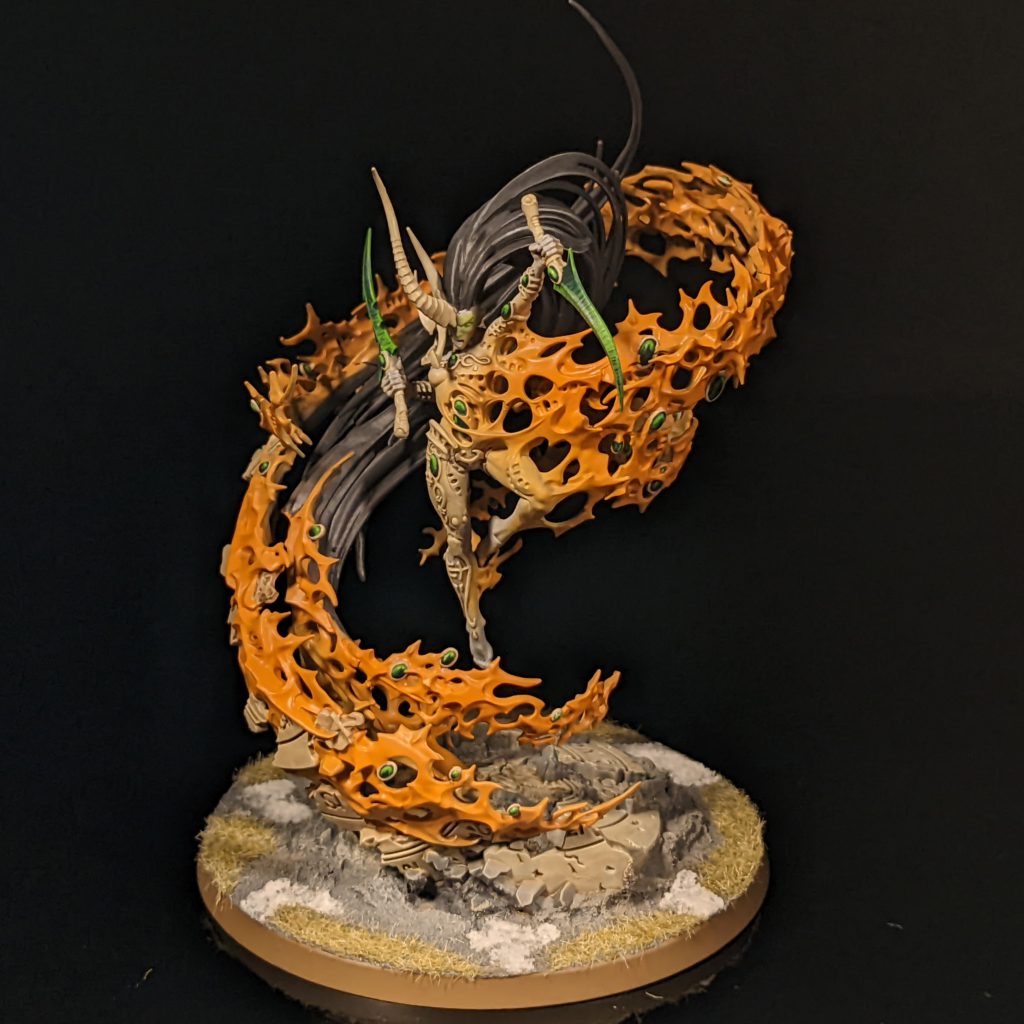
Bonus: Five Things to Know About Harlequins, Ynnari, and Corsairs
On top of Craftworld Eldar, the Codex includes the Ynnari, Harlequins, and a handful of new units representing the Corsairs, a piratical faction made up of Aeldari from all of the various groups who have fled their original way of life to roam the galaxy.
Ynnari are a Craftworld Now
Not in a lore sense, but in a game mechanics sense. Ruleswise, the Ynnari are now treated like any other Craftworld, simplifying their list-building and how they interact with the other Aeldari factions. They get four main bonuses:
- They always fight first
- They get +1 to hit if their unit is below Starting Strength
- Their Psykers get access to the Revenant Discipline, unique to them
- They can include DRUKHARI and HARLEQUINS units in the detachment (with some restrictions – most notably no Haemonculus Covens and no Phoenix Lords), and those units lose their respective subfaction abilities and gain the two listed above.
The psychic powers are solid and the characters are strong, with the Yncarne in particular having some real play. The overall trait is relatively weak, though, and the restrictions are real. The fourth bullet point above is important, too; while you can include Drukhari and Harlequins, if you do so your army loses its mono-faction bonuses (Strands of Fate, and of course also Luck of the Laughing God and Power from Pain), making this a very rough tradeoff. Because of this, we don’t expect to see Ynnari make a big splash on the competitive scene; if you want to play Craftworlds you have better options, and the theoretically interesting mixed army gives up a lot compared to what it gains.
Corsairs Aren’t a Standalone Army
Likewise, Corsairs are in this book, but they aren’t exactly a standalone army. There are three units with the new ANHRATHE keyword – Prince Yriel (HQ), Corsair Voidreavers (Troops), and Corsair Voidscarred (Elites). Corsairs have an interesting mix of keywords – they have both ASURYANI and DRUKHARI – but can’t count as one of your compulsory unit choices in a detachment unless every unit in the detachment has the ANHRATHE keyword. Both the Voidreavers and the Voidscarred are based on the models from the upcoming Kill Team boxed set; the Voidreavers are essentially the “basic” build for those models, while the Voidscarred make use of the more esoteric Kill Team specialists you might build from the set.
The Voidreavers are mostly interesting for being the cheapest Troops (read: ObSec) choice in a Craftworlds army, while the Voidscarred are notable for being able to take a Psyker, though as the unit is not a CHARACTER, it can’t do Psychic actions; if you’re a Drukhari player looking for the ability to do psychic actions to broaden your secondary choices a bit, you’ll have to look elsewhere (but not far – check out things to know about Harlequins).
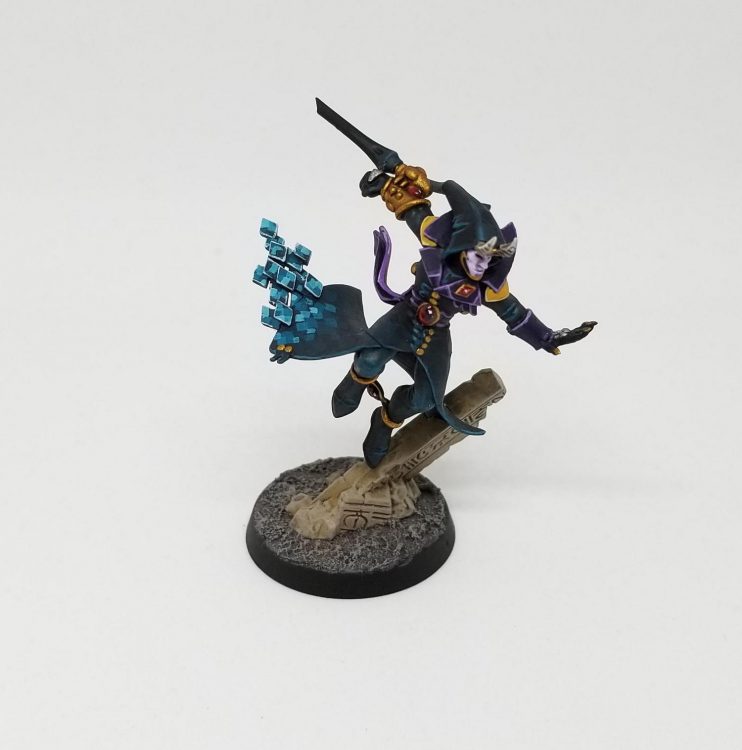
Harlequins Can Slot Into Any Eldar Army
Harlequins now have a special rule, Travelling Players, that allows any Craftworlds, Ynnari, or Drukhari army to add a Patrol detachment of them without breaking their army’s faction-wide rules (i.e. you get to keep Power from Pain or Strands of Fate). You don’t get access to the Harlequins secondary objectives, or the new Luck of the Laughing God rule, though as we’ll cover in the more detailed reviews there is surprising flexibility built in here in terms of access to Warlord traits and the like. This is a useful way to be able to take Harlequins as a small force alongside your main Craftworlds or Drukhari army – which has always seemed like something that suits their small model range – and in particular this opens up new possibilities for Drukhari, giving them an easy way to add a Shadowseer and gain access to psychic secondaries like Psychic Interrogation, which they didn’t have an easy angle on previously. The rest of the Harlequins range also opens up some new possibilities, freshening up their listbuilding.
Luck of the Laughing God Makes Harlequins Incredibly Dangerous
The new monofaction rule for Harlequins is Luck of the Laughing God – every battle round Harlequins get a number of additional Luck Re-rolls that can be used on hit rolls, wound rolls, damage rolls, saving throws, or Advance rolls. In a Strike Force game, you get 3. On top of that, each round you can make an extra roll to increase the number of re-rolls you get. You can roll up to six D6. If every result is unique, you get that many extra re-rolls; if you want to play it safe you can just roll 1D6 and guarantee yourself four per turn, or you can gamble for more and see if Cegorach smiles on you.
These are incredibly useful; they help smooth variance out a ton and turn the Harlequins’ 4+ invulnerable save into something more like a 2+ at times. They also free you up to spend your CP on other things, like pre-game buffs.
Fusion Boats are Dead, but the Harlequins Vehicles are Very Good
Taking a unit packed with fusion pistols in a Starweaver isn’t something Harlequins can still do – a Troupe can only have 2 pistols per 10 models – but the vehicles themselves are better than ever, particularly Voidweavers. In addition to their -1 to be hit, enemies can’t re-roll hit rolls against them and their Prismatic Cannons and Haywire Cannons are substantially improved, making them very deadly.
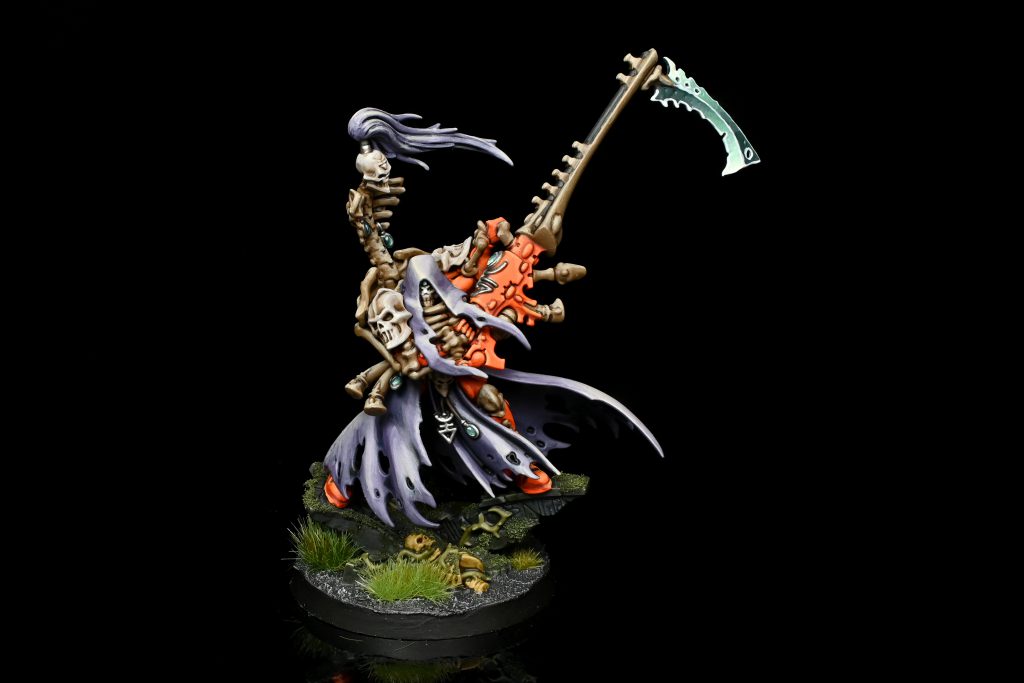
How Strong Are They Going to Be?
It should come as no surprise that we believe that Craftworlds are going to be a good army, and should represent a significant improvement for the faction. The only question mark is how they perform against the two top players in the metagame, T’au and Custodes. What’s interesting about Craftworlds Eldar is that, while their datasheets are very powerful, their points costs are also pretty high and they struggle with building Battalions, making it difficult to fit everything you’d want into an army. While we still believe they’re going to be a powerful army, that leaves them very vulnerable to either hitting “one bad turn” (which Custodes excel at inflicting via Emperor’s Auspice) or just running out of stuff (a challenge against T’au), and while this book has spectacular expectations for it, it may actually have more of a muted impact than expected. The current metagame is extremely hostile however, and as that shifts we’d expect players to find ways to make effective use of what’s here – and even in the short term, the Webway Gate might just be enough to blow things wide open.
The bigger surprise here may be Harlequins, who seem like a much stronger standalone army than before thanks to some neat tricks and the ability to use free re-rolls to keep otherwise fragile models on the table longer. They’re very nasty in melee and have better shooting than before, including against heavy infantry targets. They may be the surprise contender at the top. And if they aren’t, well, they’re liable to just make Craftworlds and Drukhari better by showing up as a detachment to shore up weaknesses.
Where to Read More
That’s the quick version. It’s still a lot but well, this is a huge book – Codex: Aeldari is as big as Codex Space Marines, and it’s packed with rules. If you want to dive even deeper and read more, we don’t blame you – and as we mentioned above we’ve prepared a massive deep dive into the faction – just click this link right here to jump to the deep dive:
And as always, if you have any questions or feedback, drop us a note in the comments below or email us at contact@goonhammer.com. We’re particularly interested in knowing how you feel about this format, and whether we should keep doing high level and deep dive versions of reviews in the future, or just do the deep dive.


